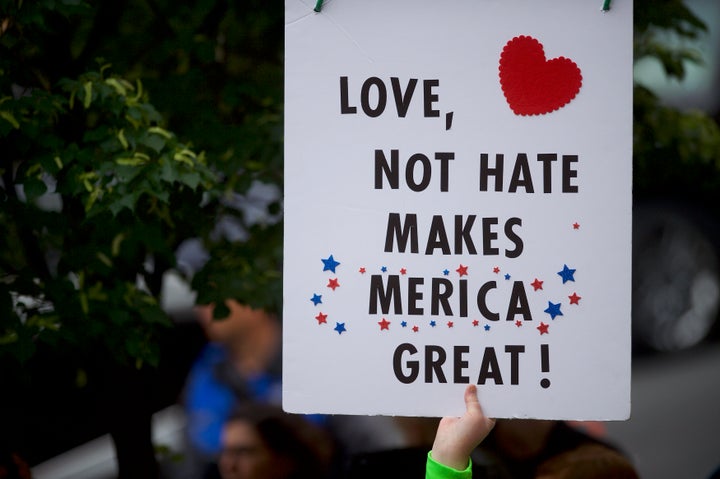
The killing of Richard W. Collins III . A noose cryptically left in an exhibit at the National Museum of African American History. “N***er” spray-painted in big black letters on the home of one of the country’s greatest black athletes. Two Portland residents stabbed to death by a white supremacist, after coming to the defense of Muslim and black girls being bombarded by slurs.
This is America.
In a span of several weeks, these stories of hatred have flooded our news feeds, mixed in with the deluge of dread-inducing updates on the state of global politics. For many, the Portland stabbing in particular has been something of a wake-up call, a reminder of the violent and deadly ramifications of racism in even the most ostensibly liberal places.
The incident plunged the citizens of Portland into a state of “shock and mourning.” We’re all shocked. It is only natural, after all, to be surprised by such cruelty.
But the truth is, we shouldn’t be shocked at all. Not by a single one of these hateful events, and not by a single one of the many surely to come. It’s a sad, but unfortunate reality: racism perpetuates physical, spiritual and emotional violence. That violence is not surprising, it is an inevitability of a racist society.
Immediately after the election, when the insidiousness of the so-called “alt-right” finally began to dawn on people, there was an especially palpable feeling of fear and dread among marginalized people, especially people of color, unsure of what the future would entail.
Within two weeks after President Donald Trump’s election in November, reports emerged that there was a sudden “outbreak” of nearly 900 hate incidents across the country. These incidents included black students being told to sit in the back of school buses, synagogues vandalized with Swastikas, and “whites only” spray painted on immigrant churches.
It felt as though the so-called “whitelash” had begun, but, as the insanity of the Trump administrated created a constant overload in political news ― the Russia investigation, James Comey’s firing and so on ― the fear of a possible uptick in hate seemed to fade (at least in the media, certainly not in the lives of those who said uptick truly impacts).
Now, eight months later, it’s become impossible to ignore. The topic of hate seems to be “trending” right now ― but, in reality, it always was.
As writer Jamilah Lemieux put it succinctly on Thursday:
Let’s just accept this. Of course, acceptance doesn’t mean that any of this is normal, or that we should accept the fact that we live in a country where things like this can happen. Nor should we ignore the correlation between the rise of the alt-right during the Trump campaign, and the spread of hateful rhetoric in the mainstream.
On Thursday, after it was reported that a noose had been found in an exhibition at the National Museum of African American History and Culture came out, the People For People For the American Way organization released a statement that got at the heart of what we’re dealing with:
“These incidents aren’t isolated; they’re symptomatic of our country’s long history of white supremacy... We can’t ignore our country’s past, and we can’t allow ourselves to believe that this kind of violence is inevitable.”
To be truly surprised than any of these incidents have occurred in America is to ignore the fact that these events (the ones that make the news) do not exist in a vacuum. Rather, they lie on a horrifying historical continuum ― a legacy of racism and hatred that has ebbed and flowed for as long as America has existed.
That legacy has included, of course, the devastation of Native American peoples and land, slavery, segregation, domestic terrorism from groups like the KKK, violence against the LGBTQ-community, women, the disabled and the economically oppressed.
White supremacist violence in all its forms― be it “alt-right” trolls on the internet, or spray-painted slurs, or the killing of black and brown folks and their allies ― is happening, constantly. It doesn’t stop just because we’re not talking about it. It shouldn’t take nooses in a black museum to remind us that anti-blackness is alive and well. It shouldn’t take Bill Maher using the n-word on cable TV to remind us that liberals can be racist.
The fact is that there is a deep problem in America and it didn’t start with Donald Trump, or his alt-right surrogates. This should be common knowledge. lt is something we all live with. But in moments like these, it bears repeating.
